Tag: Motivation
Instant Happiness
What is one small thing you could do today that would make you happy?
An Exercise to Prepare for Confinement
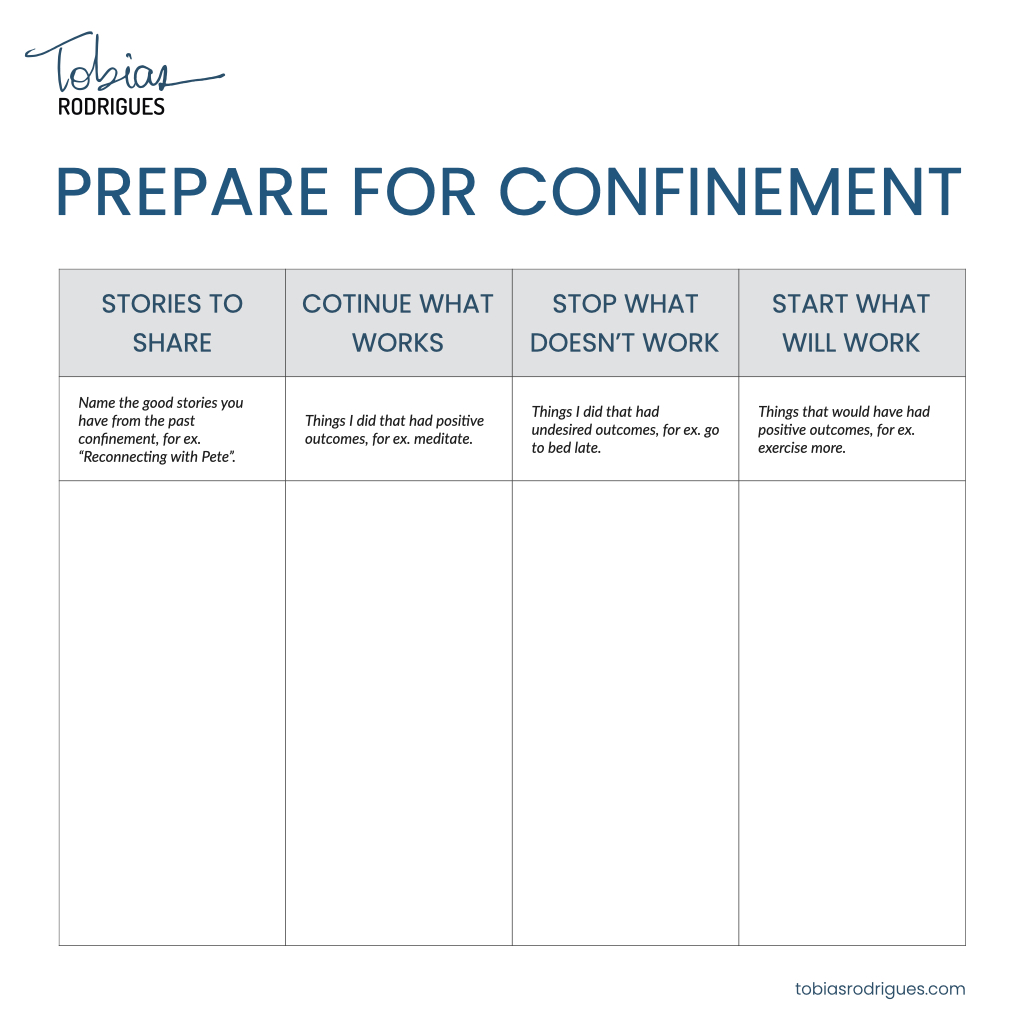
Winter is coming (for some of us) and with it the likelihood of another confinement (in one form or another). It would be dumb not to prepare. This is what I’m doing.
Three Steps
Step 1: Take some time alone to fill in the template below. Ask family and friends to do the same, especially those who will be spending more time with you.
Step 2: Come together in a celebrative spirit to share your findings.
Step 3: Decide what you will commit to. Focus on what requires low effort but has a high impact for you and those around you.
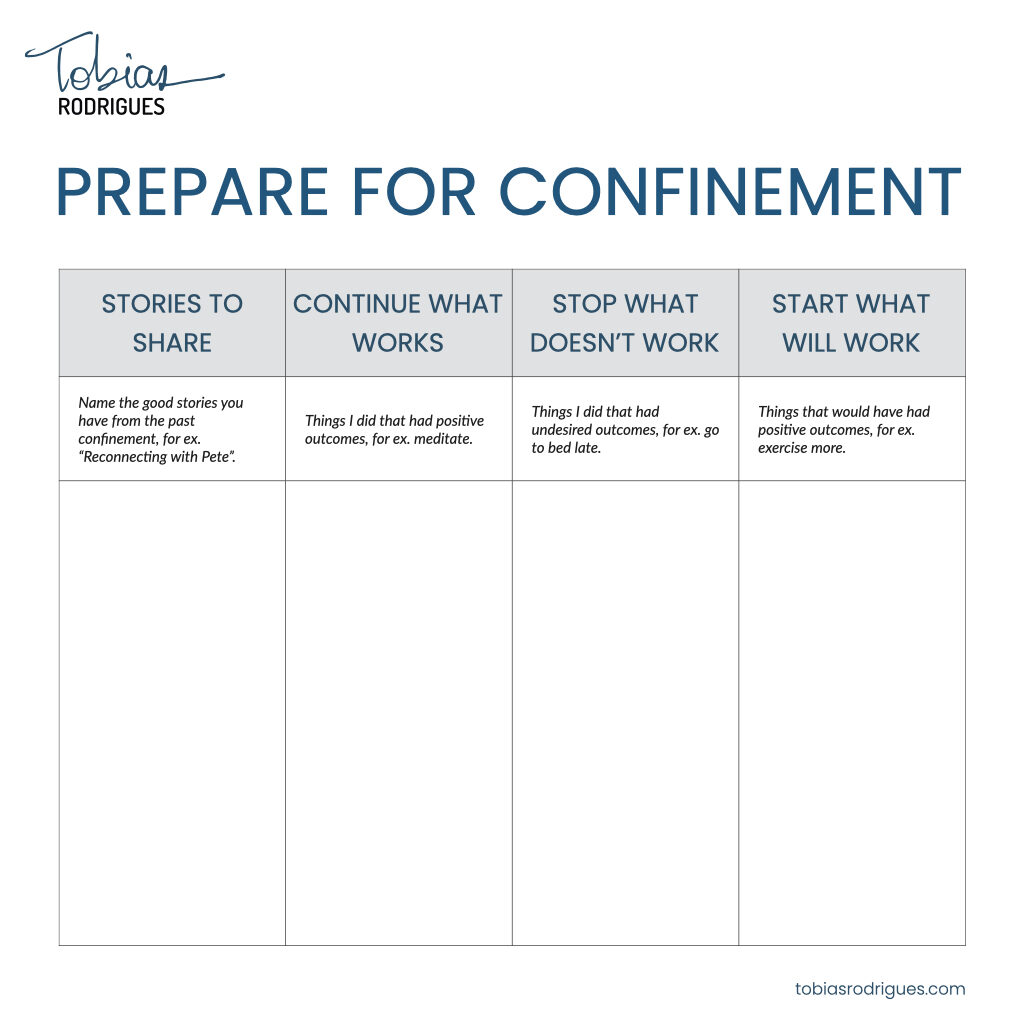
—
Would love to know what works best for you. Please share your results.
Podcast: How a Former Priest Creates Badass Teams
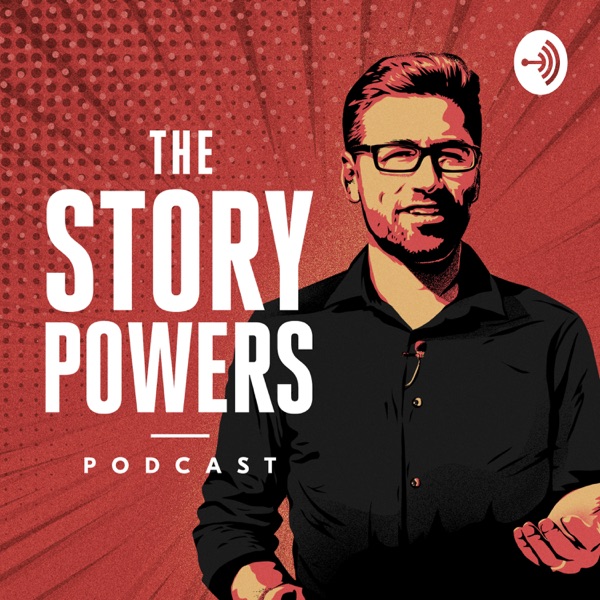
My good friend Francisco Mahfuz recently had me as a guest on his podcast “The Story Powers”. It was my first time, and I must say I had loads of fun. Fransisco is a great host.
Some of the topics we talk about are:
- How being a priest helps me build betters teams
- Mistakes leaders make in times of crisis
- My transition and journey from priesthood to corporate trainer
You can listen to the episode here as well as on Spotify and YouTube:
_________
_________
_________
Thanks buddy for inviting me and keep up the fantastic work!
Be. A message for leaders in confinement.
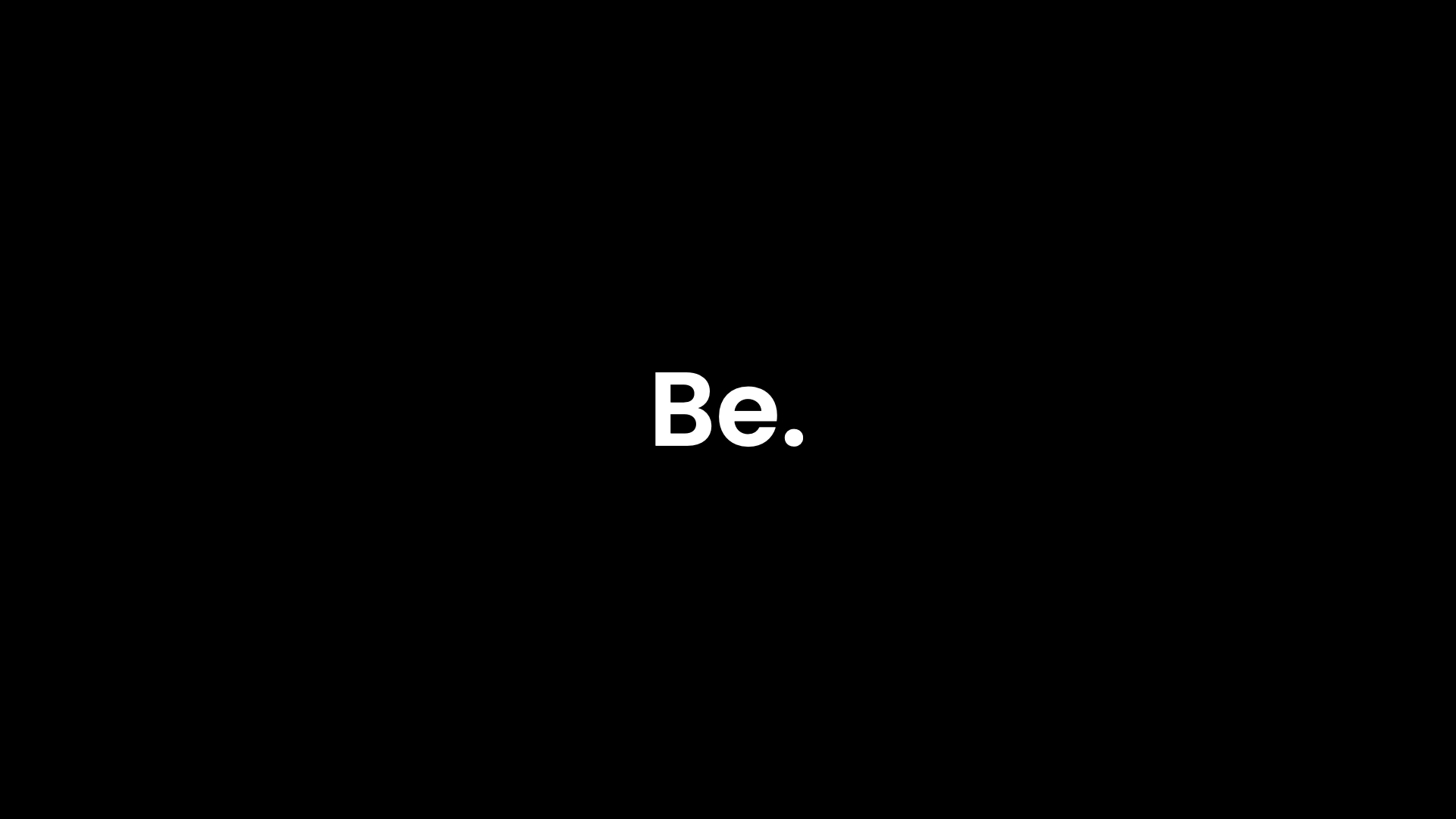
13 public speakers, members of keynoteboutique.com, join rhetorical forces to bring you a comforting message in these challenging times.
—–
—
Music by Alexander Nakarada | https://www.serpentsoundstudios.com
Six Rookie Mistakes When Leading Remote Teams


—
When there’s a sea storm, captains are called upon to reassure their crew, so that together they keep the ship safe enough to move in the right direction.
The Coronavirus storm has forced teams — without warning and without delay — to work from home in improvised office spaces, fighting to focus on work while juggling several other responsibilities and concerns at the same time.
If remote working poses a challenge in and of itself, all the more so in crisis conditions, where uncertainty and confusion make the load all the heavier.
Since 2011, I’ve been helping organizations — in good and bad times — build teams, many of which with some or all their members working remotely, often in different time zones.
Here are six mistakes you want to avoid (and six recommendations) when leading teams remotely, especially in crisis conditions.
—
Mistake #1: Believe it is (almost) business as usual
—
A new paradigm is emerging, as tends to happen in crisis. And with it, new challenges are thrown at your team. It would be a mistake not to stop and fully appreciate the nature of the challenges you and your team are now facing.
It’s a mistake to think this is only about keeping things going a bit longer before it’s over. It’s a new problem. Face it with your team.
—
RECOMMENDATION: Do a diagnosis
Imagine you are Dr. House. If the challenge you now face is an illness, what would you call it?
—
Mistake #2: To execute without a roadmap
—
In a crisis it is easy for teams to get disoriented, especially if they are forced in a rush to work remotely. You might have a sense of what comes next, but the team most likely has no f**king idea.
It is a mistake to ask teams to continue moving forward without a new road map that shows this is where we are, this is where we are going, and most importantly, this is why we’re going. I wonder what Nietzsche was thinking when he said: “He who has a why to live for can bear almost any how.” 😉
—
RECOMMENDATION: Give them context and relevance
Explain to the team how their work fits in the larger picture, and why their contribution really matters.
—
Mistake #3: Fail to clarify new expectations
—
New problems require new behaviours. It it especially important that we define deliverables and ownership so that everyone knows who does what and who is responsible for making sure it gets done.
—
RECOMMENDATION: Tell them what they CAN’T screw up
New problems require exploration, which can lead to failure. It is crucial you specify what bits you expect the team to do absolutely right, the bits where failure is not an option.
—
Mistake #4: Make it a one-way road
—
If feedback is important, now it is more than ever. It’s a rookie’s mistake to fail to create NEW channels for feedback. Unless you ask, you will not know the struggles and suggestions your team has.
—
RECOMMENDATION: Tell them it’s NOT ok to stay stuck and silent
Send out questions before meetings, and ask everyone to come prepared to share.
—
Mistake #5: Neglect positive feedback
—
Humans need feedback to grow, which makes giving feedback the gift of growth: constructive feedback gives us the path for growth, and positive feedback gives us the energy to grow.
In times of crisis, teams need tons of positive feedback — the energy — to get through challenges. Forgetting to give positive feedback is a silly mistake.
—
RECOMMENDATION: Double down on positive feedback
Give twice as much positive feedback and show twice as much appreciation. Start with positive feedback. End with positive feedback. Transition with positive feedback. And ask the whole team to give… POSITIVE FEEDBACK.
—
Mistake #6: Undervalue repetition
—
The Romans believed that “repetitio est mater studiorum”, that repetition is the mother of learning. When working remotely, technical issues can make getting information across difficult.
Moreover, when remote work is being improvised moment by moment and under great uncertainty, tension is generated, which makes getting information across even more difficult.
Hence the need to repeat, repeat, repeat.
—
RECOMMENDATION: Sound like a broken record
Say it at the beginning. Repeat in the middle. Ask them to say it. And say again at the end.
Feedback Part II: How to Encourage the Listener

Humans need feedback to grow, which make giving feedback the gift of growth. While positive feedback gives us the energy to grow, constructive feedback — when done well — shows us the path for growth, that is, what we can improve and how.
This series focusses on how we can make our constructive feedback more effective.
In part II, I share three ways to encourage the listener when we give constructive criticism.
What techniques do you use to encourage your listener?
—
The Trap

Warning: This post is a rather thick philosophical “steak”. If you don’t have much of an appetite, you can save it for later. If you do, take your time and enjoy.
Who is it that is aware that I am thinking?

Let’s start with a demonstration: While you’re reading, can you hear what you’re thinking? Catch yourself thinking. Is it What’s he talking about?, Where’s he going with this? or something else? Go ahead…
Did it? Good! Now, who did that? Who was it that just became aware that you are thinking? You? The same you that was thinking while you were reading?
Before we answer this, notice these two distinct ways of thinking: you can think without noticing you’re thinking, and you can think, aware that you are thinking.
Thinking without noticing you’re thinking is a curse.
Einstein thought that doing the same thing over and over again and expecting different results is the definition of insanity. When life isn’t as good as we want, thinking without being aware of thinking is a curse.
It’s a curse because you’re trapped in the process of thought that creates your reality and trapped in the reality that reinforces your thoughts — round and round in a vicious circle that produces and predicts the same results over and over.
In order to create new thinking, we want to break free from the thinking trap that produces undesired results. Here’s how:
Awareness thinking is to become aware
of the thought processes that go on in your mind.
In awareness thinking, there’s your thoughts and then there’s something else that notices your thoughts. That something else is… YOU! You break free from the trap because you become aware that you are NOT your thinking.
You see that your thoughts — like your hand — are not you. If your hand is cut off and dies, you do not die with it (unless you don’t treat it). This realization releases us from the domination of thought, enabling us to create new thinking.
As Stephen Covey, author of The Seven Habits of Highly Effective People, said:
The way you see the problem is the problem.
The way we see the problem is thinking without being aware that we’re thinking. But to look at the way we see the problem gives us awareness of our thinking and that it is governed by a set of principles that lead to a set of outcomes.
Becoming aware of the thought process and it’s principles gives you the opportunity to create new principles, thus leading to new outcomes.
A real example: Nobel Prize-winning mathematician, John Nash, on whom the book and film “A Beautiful Mind” are based, was diagnosed with paranoid schizophrenia.
(BTW, “schizophrenia”, from the Greek, literally means “a splitting of the mind” — befitting, seeing we’re talking about two split ways of thinking.)
Awareness of thinking
frees you from the trap of thinking.
After years of treatment, Nash chose to stop taking medication and decided to reject his delusional thinking habits. As a result, Nash willingly “thought” himself out of this disorder:
“I began to intellectually reject some of the delusionally influenced lines of thinking which had been characteristic of my orientation. This began with the rejection of politically-oriented thinking as essentially a hopeless waste of intellectual effort. So at the present time I seem to be thinking rationally again.” John F. Nash, Jr. – Autobiography
Awareness of his delusional thinking freed him from it. Aware of his thinking, Nash was able to see its effects (a waste of intellectual effort). This became the new governing principle for the thought process that rejected the delusional thoughts.
If there’s a lesson here, it might be: When suffering, trapped in my thoughts about reality, ask the question: Where is the who that is aware that I am not my thinking?
Love to hear your comments!!
The Trust Story

This meant he didn’t really trust anyone.
Except for one person: his special friend. It took him more than 10 years to do so. Before trusting him, he assessed the events that indicated his special friend was worthy of trust:
– When I wanted to go for a drink, my friend was always ready.
– When I renovated my apartment, my friend booked all his weekends until it was done.
– Even when I considered a career change, my friend was there to carefully listen and give good advice.
– And when my mom died, my friend never once left my side.
For the first time the man felt he was ready to trust.
The next day, his special friend died.
For the remainder of his days, the man wondered if his friend had also trusted him. And when they met in the afterlife, the first thing the man did was ask his friend if he had been trustworthy, and if so, when had he decided to trust him.
Staring at the man with a look of confusion on his face, the special friend said:
Of course you’re my trusted friend! I decided to trust you the day we met. And ever since you’ve never betrayed my trust:
– Whenever you needed a favor, you trusted me to ask for help.
– When you wanted to go for a drink, it was me who you choose to confide your secrets.
– When you renovated your apartment, you allowed me and no other to enter the privacy of your home to rebuild it.
– Even that time — remember? — when you were considering a career change, again it was me who you turned to for advice.
– And when your mom passed, I was the only one you accepted at your side.
Your actions have taught me the meaning of trust!
The man stood there in shock, thinking:
You never fully know what people are capable of. By this token, you’ll never really know when you can trust someone.
Credits: I first heard of a credit for trust from my dear friend Florian Mueck.
A Lesson From Tough Times

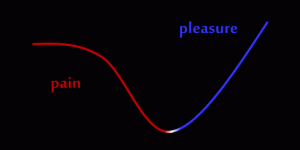
Think of someone who causes a sense of admiration when you recall the tough stuff they’ve been through and still managed to keep it together. How did they do it?
Lao Tzu said that the person who conquers others is strong while the person who conquers him/herself is mighty. How do you do that? Is there a formula?
It is precisely the extreme events of our life
that show us the essence of growth.
My personal experience of “intense” change includes moving unexpectedly at the age of 13 from Canada to a tiny Island of Portugal; losing quite a bit of weight (25 kg/55 lbs), and a career change.
More importantly, I’ve seen others go through much tougher events, such as an unjustly large jail sentence, the shaking news of a terminal illness, the untimely death of a son or the raw suicide of a sibling.
What does it take for us to change or overcome imposed change? In all these situations, I’ve noticed two defining forces that allow us to effect change or to overcome imposed change: pain and pleasure. I call them “The Curves of Change”.
The curves apply both to a desired change we wish to implement or an imposed change we wish to overcome.
Pleasure makes change desirable.
Pleasure is an attracting force: it pulls us to change. When faced with a situation to overcome, visualizing the pleasures that we will receive creates the desire to change.
For ex., when my family and I moved, the desire to make friends impelled me to quickly improve my Portuguese. When I lost weight, the idea of being slimmer made me want to exercise. When I changed career, the hope of more freedom fueled me to complete another master’s.
When we want to change, the first step is to visualize the pleasures that will be obtained as a result of changing. This provides the motivation to take action.
Pain makes change inevitable.
Pain is a repelling force: it pushes us to change. Pain is more effective than pleasure. Often there’s a taunting voice in our head: “It’s too hard. It’s not worth it. Not now.”
The efforts involved in changing can sway us to give up and settle for the way things are. The solution to reducing the pain involved in changing is to emphasize the pain involved in not changing!!
The solution to overcoming
great pain is a greater one.
For ex., when we moved, feeling ridiculous when I talked helped me overcome the challenges of an unfamiliar language. As I lost weight, the idea of feeling tired again drove me to stick to months of strict dieting. When the uncertainties of a new career made me doubt, the thought of another month doing the same thing pushed me forward.
The second step is to reduce the pain involved in changing by emphasizing the pains of not changing. This eases the feeling of discomfort involved in changing and gives us the stamina to endure.
Have no doubt, the road of change turns to lessen pain and curves to enhance pleasure. Be sure to look at it from this perspective. To successfully effect any change, engage in increasing pleasure and getting rid of pain!
What roles to pain and pleasure play in the curves of your change?
Rage Against The Dying Of The Light

In this poem “Do Not Go Gentle Into That Good Night”, Welsh poet and writer, Dylan Thomas proclaims that the wise and good do not go gently into the good night of death.
Instead, they rage against the dying of the light, against the demise of what wisdom and good their words and deeds may have effected in the world.
Though good and wise leaders must die, as we all,
their light need not follow them into the good night.

